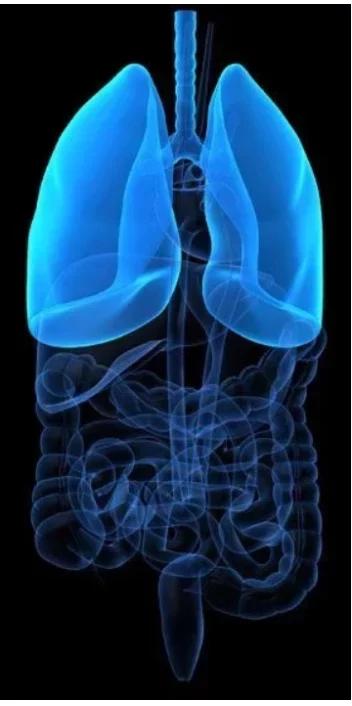Article
Nab-Paclitaxel Noninferior to Docetaxel in Previously Treated NSCLC
Author(s):
January 29, 2021 - Nab-paclitaxel proved to be noninferior to docetaxel, having showcased improved progression-free survival, overall survival, and overall response rate in patients with previously treated advanced non–small cell lung cancer.

Nab-paclitaxel (Abraxane) proved to be noninferior to docetaxel, having showcased improved progression-free survival (PFS), overall survival (OS), and overall response rate (ORR) in patients with previously treated advanced non–small cell lung cancer (NSCLC), according to findings from the phase 3 UMIN000017487 trial presented during the 2020 World Conference on Lung Cancer Singapore.1
A total of 503 patients were randomized 1:1 to receive either nab-paclitaxel (n = 252) at 100 mg/m2 on days 1, 8, and 15 every 3 weeks or docetaxel (n = 251) at 60 mg/m2 on day 1 every 3 weeks. Patients were stratified by sex, histology, disease stage, ECOG performance status, number of prior chemotherapies, and previous exposure to immune checkpoint inhibitors. In addition, patients with activating EGFR mutations or ALK fusions had to show disease progression or intolerance of treatment with 1 or more EGFR tyrosine kinase inhibitors. The primary end point was OS.
The trial investigators set a noninferiority margin of 1.33 hierarchically and a hazard ratio of 1.25. The superiority of nab-paclitaxel was tested only when noninferiority was confirmed by OS. Other statistical requirements included a one-sided α of 0.1% for the interim analysis and an α of 2.5% for the final analysis. The study was powered for 80%.
A previous phase 2 study demonstrated that weekly nab-paclitaxel was associated with acceptable toxicity and a favorable ORR in previously treated patients with advanced NSCLC. In that study, the ORR was 31.7% (90% CI, 19.3%-44.1%), with a median PFS of 4.9 months (95% CI, 2.4-7.4) and median OS of 13.0 months (95% CI, 8.0-18.0).2
Median PFS in the intention-to-treat (ITT) population of this study was 4.2 months in the nab-paclitaxel arm compared with 3.4 months in the docetaxel arm (unstratified HR, 0.76; 95% CI, 0.63-0.92; P = .0042). Median OS was reported as 16.2 months in the nab-paclitaxel arm compared with 13.6 months in the docetaxel arm (stratified HR, 0.85; 95% CI, 0.68-1.07). Nakamura said noninferiority of nab-paclitaxel was confirmed because the upper limit confidence interval of 95.2% was less than the protocol-specified margin of 1.25. He added that superiority was not confirmed by hierarchical test.
The ORR in the total population was 29.9% in the nab-paclitaxel arm compared with 15.4% in the docetaxel arm (P = .0002). When stratified by squamous versus nonsquamous histology, patients with squamous cell carcinoma who received nab-paclitaxel had an ORR of 30.4% versus 10.4% in patients who received docetaxel (P = .0207). Similarly, patients with nonsquamous cell carcinoma who received nab-paclitaxel had a higher ORR than patients who received docetaxel (29.7% vs 16.7%, respectively; P = .0042).
“Baseline characteristics were balanced between the groups,” said Atsushi Nakamura, MD, PhD, from Sendai Kousei Hospital in Japan, in a virtual presentation of the data.
For the 2 groups, the median age was 67 years and the majority were male (69%). In the nab-paclitaxel arm, 82.2% had stage III/IV disease compared with 83.3% in the docetaxel arm. About one-fifth of patients (19.5%) had squamous histology. Almost 91% (90.9%) in the nab-paclitaxel arm had received 1 prior chemotherapy treatment versus 92% in the docetaxel arm and 16.3% of patients in the nab-paclitaxel arm versus 15.9% of the docetaxel arm were previously treated with immune checkpoint inhibitors.
Among patients in the nab-paclitaxel arm, 3 were deemed ineligible for study and 7 were untreated (3 patients withdrew consent and 4 progressed before treatment). In this arm, 245 treated patients were included in the safety analysis. In the docetaxel arm, 2 patients had progressed before treatment and 249 treated patients were included in the safety analysis.
Regarding toxicities, the rate of grade 3/4 leukopenia in the nab-paclitaxel arm was 25.7% compared with 65.9% in the docetaxel arm (P <.001). Grade 4 leukopenia was reported in 1.2% of patients in the nab-paclitaxel arm compared with 11.6% in the docetaxel arm.
Incidence of grade 3/4 neutropenia was 39.6% in the nab-paclitaxel arm compared with 83.1% in the docetaxel arm (P <.0001). Grade 4 neutropenia was observed in 12.2% of patients in the nab-paclitaxel arm compared with 57.8% in the docetaxel arm.
For nonhematologic AEs, Nakamura reported higher cases of febrile neutropenia in the docetaxel arm. All-grade and grade 3/4 febrile neutropenia in this arm were 22.1% for both, respectively, compared with the nab-paclitaxel arm in which all-grade febrile neutropenia was observed in 2.0% and grade 3/4 in 2.0% (P < .0001). The rate of peripheral sensory neuropathy was increased in the nab-paclitaxel arm at 55.5% grade 3/4 events versus 20.1% with docetaxel (P < .0001).
At the conclusion of the presentation, Nakamura noted that the primary objective was met with the noninferiority margin of 1.25 and that superiority was apparent with regard to PFS and ORR. “Nab-paclitaxel should be considered a standard option for previously treated patients with advanced NSCLC,” Nakamura said.
References
- Nakamura A, Yoneshima Y, Morita S, et al. Phase 3 study comparing nab-paclitaxel with docetaxel in patients with previously treated advanced non-small cell lung cancer–J-AXEL. Presented at: 2020 World Conference on Lung Cancer Singapore; January 28-31, 2021; Virtual. Abstract OA03.05.
- Sakata S, Saeki S, Okamoto I, et al. Phase II trial of weekly nab-paclitaxel for previously treated advanced non-small cell lung cancer: Kumamoto thoracic oncology study group (KTOSG) trial 1301. Lung Cancer. 2016;99:41-45. doi:10.1016/j.lungcan.2016.06.009








